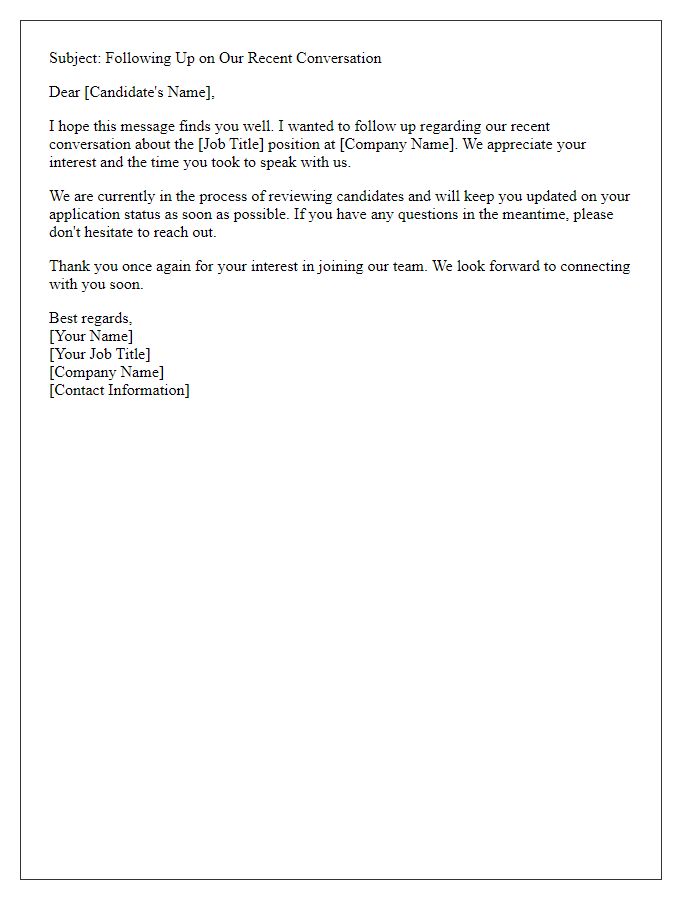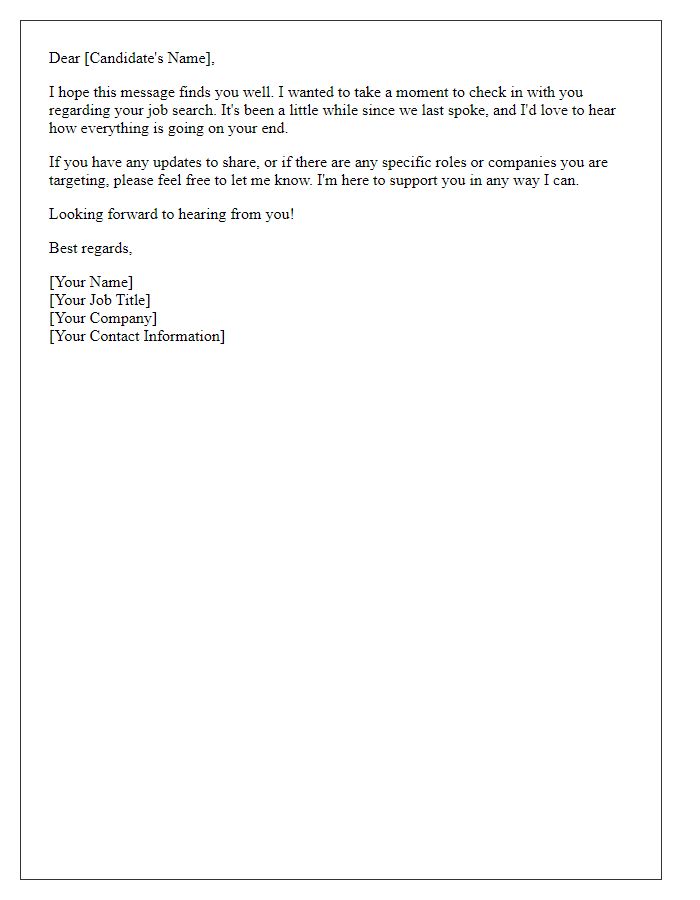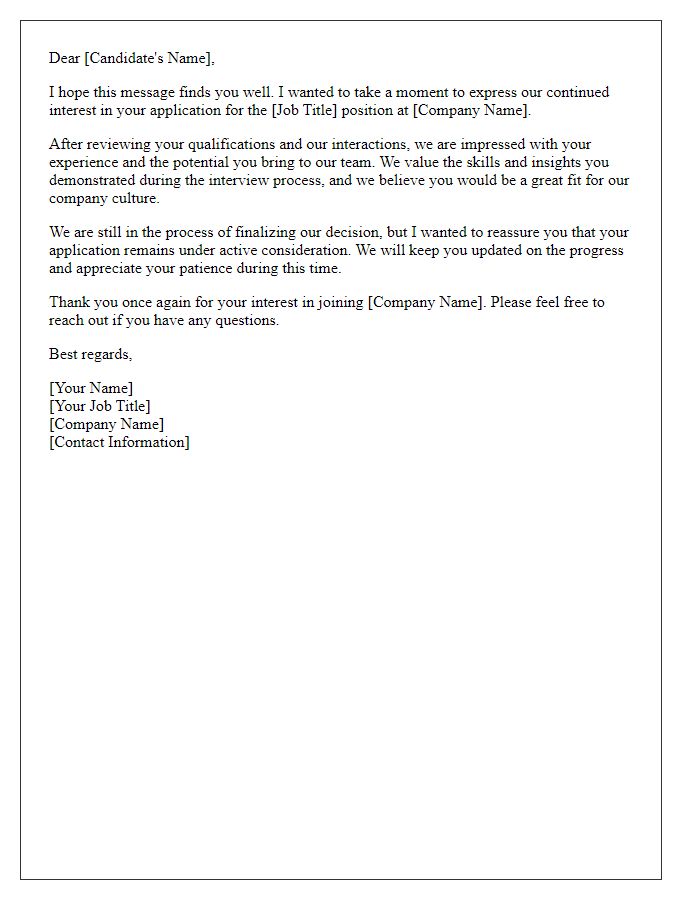Hey there! Following up with talented candidates is crucial in today's competitive job market, and it's all about creating a personalized touch. You want to not only express your continued interest in their skills but also highlight how they align perfectly with your company's vision. Crafting a thoughtful and engaging follow-up letter can make all the difference in reigniting that conversation. Interested in learning how to write the perfect follow-up letter? Keep reading!

Personalized Subject Line
A targeted follow-up message can greatly enhance candidate engagement during the headhunting process. Personalized subject lines often yield higher open rates, thereby increasing the likelihood of prompt responses. For instance, utilizing the candidate's first name paired with a role or opportunity creates an inviting tone. Mentioning specific skills or experiences, such as "Marketing Specialist with Digital Expertise," draws attention to the candidate's unique qualifications. Highlighting relevant company achievements or growth, like "Join Our Team at Tech Innovations as We Expand Our Global Reach," not only conveys excitement about potential employment but also showcases the organization's ambition. Ultimately, a captivating subject line can pave the way for effective communication and successful recruitment outcomes.
Clear Purpose Statement
Headhunting initiatives often require meticulous follow-up with candidates to maintain engagement and reinforce interest in potential opportunities. A follow-up should clearly articulate the purpose, such as evaluating the candidate's ongoing interest in the position, which could be a senior management role at a well-known Fortune 500 company in the technology sector. Inquiries about their current employment status, expectations, or any new developments since the last communication should be included. Highlighting relevant company achievements or upcoming projects can also provide additional context for the candidate, ensuring they remain informed and motivated about the opportunity presented. Emphasizing the unique aspects of the company culture, such as innovation, collaboration, or market leadership, will help to solidify the candidate's interest in pursuing the role further.
Highlighting Potential Opportunities
Potential opportunities within dynamic industries can present significant career advancement for skilled professionals. High-demand sectors, such as technology, finance, and healthcare, are constantly seeking talent to drive innovation and efficiency. For example, software development positions in Silicon Valley lead to exciting projects in artificial intelligence and machine learning, often offering competitive salaries exceeding $120,000 annually. Likewise, financial analysts in New York City can access lucrative roles in investment banking with bonuses that can double base salaries. The healthcare sector, particularly within telemedicine, is expanding rapidly, providing numerous pathways for advancement and job security. Recognizing these trends can empower candidates to leverage their unique skill sets, enhancing their professional trajectories while contributing to transformative projects.
Call to Action
A strategic follow-up with candidates is crucial in the headhunting process. Crafting a personalized message highlights their unique skills in relation to the role. Mention specific qualifications, previous achievements in similar positions, or relevant experiences that align with the job's requirements. Emphasize the values and culture of the hiring company, such as innovation and teamwork, to appeal to candidates' aspirations. Finally, include a clear call to action, inviting them to discuss further how their expertise can make an impact in the organization. This approach not only re-engages the candidates but also solidifies the connection, fostering interest in the opportunity.
Professional Closing and Contact Information
Working in a dynamic job market often requires proactive talent acquisition strategies, particularly in specialized fields such as technology and finance. Effective closing communications with candidates are critical for fostering positive relationships and ensuring engagement. Professional closings should include clear contact information to facilitate immediate responses. Utilize concise and courteous language, focusing on the next steps in the recruitment process. Ensure that details such as the specific role title, company name, and relevant timelines are included to provide clarity. Including your LinkedIn profile or professional email signature can enhance connectivity and offer candidates a direct avenue for inquiries, reflecting a polished and approachable recruiter persona.
Letter Template For Headhunting Follow-Up With Candidate Samples
Letter template of follow-up communication after initial candidate outreach

Letter template of inquiry regarding a candidate's availability for a position

Letter template of updates on the hiring process shared with the candidate











Comments